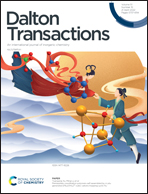Rational construction of a CNTs@VO2 nanosheets modified separator for enhancing the performance of lithium–sulfur batteries†
Abstract
Although lithium–sulfur (Li–S) batteries possess great potential to become the next generation of energy storage technology due to their fivefold higher energy density than commercial lithium-ion batteries, their practical application is still hindered by their poor cycling stability, especially resulting from the disturbing shuttle effect of soluble intermediates. In this study, vanadium dioxide (VO2) nanosheets were successfully grown onto CNTs to form CNTs@VO2 through hydrothermal and calcining processes. The hollow structure of the high conductive CNTs offers internal space and mesopores to accommodate the electrolyte combined with the polar metal oxide VO2 nanosheets providing the chemical anchoring. The hollow binary core–shell host acting as the nanoreactor that serves as the modifier of the separator results in the intensive physical and chemical dual adsorption of lithium polysulfide species (LiPSs), promoting the conversion of long-chain LiPSs to alleviate the shuttle effect significantly and boosting the performance. In addition, the CNTs enhance the electronic conductivity and the electrolyte infiltration of the separator. Notably, the modified separator demonstrates a high initial discharge capacity of 1397 mA h g−1 at 0.2C and retains a stable cycling ability with a reversible capacity of 965 mA h g−1 over 200 cycles at 1C. Even for the high sulfur loading of 7.4 mg cm−2, it can deliver a high areal capacity of 5.4 mA h cm−2 at 0.5C.



 Please wait while we load your content...
Please wait while we load your content...